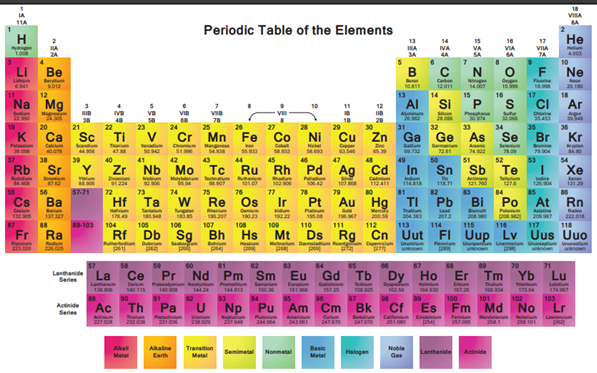Hi readers!
Oscar Wilde once said “To live is the rarest thing in the world. Most people just exist”. This highlights that true living, with awareness and engagement, is uncommon.
And that’s the case with REEs.
Dear readers, in the war arena, you might have been hearing the word “the Rare Earth Elements” (REEs). The accepted definition of REE is that these are a group of 17 chemically similar metallic elements located in the middle of the periodic table: pl. see figure at the top (atomic numbers 21, 39, and 57-71) and possessed exceptional/irreplaceable fluorescent, conductive, and magnetic properties which make them very useful when alloyed in small quantities with more common metals such as iron.
Geologically speaking REEs are not rare perse as its deposits are found in many places around the globe including Pakistan, with some elements in about the same abundance in the earth’s crust as copper or tin. However, REEs are never found in very high concentrations and are usually found mixed together with one another or with radioactive elements, such as uranium and thorium thus making it almost inseparable or difficult to extract and refine economically: a property that makes REEs rare. Such chemical properties of REEs makes it difficult to separate from surrounding materials and from one another and hence pose great difficulties in purification of REEs. Current production methods require a lot of aggregate and generate harmful waste which include radioactive water, toxic fluorine, and acids.
REEs play a fundamental role in several crucial state-of-the-art technologies. Despite their name not accurately reflecting their abundance in the Earth’s crust, they are considered prized for their unique magnetic, luminescent, and conductive properties, indispensable for application in electronics, green energy, medical and defense technologies. For example, REEs such as neodymium and dysprosium are essential for permanent magnets used in electric vehicles, wind turbines, and various electronic devices. Some of the REEs are used for creating energetic and bright colors in displays, LEDs, and phosphor enabling screens of our phones, computers, and televisions.
Certain REEs, like cerium act as catalysts in petroleum refining and other industrial processes, improving efficiency and reducing emissions while Gadolinium is used in nuclear reactors for neutron absorption which help controlling the nuclear reaction. Smartphones, computers, and other devices rely on REEs for their displays, batteries, and other components of consumers electronics.
REEs plays a crucial role in production of wind turbines, electric vehicles and energy-efficient lighting and hence, is an essential component of green energy. Also, MRI machines, laser scalpels, and certain cancer treatments utilizes REEs besides REEs being an essential component of radar systems, guided missiles, night vision equipment, and various military vehicles.
REEs are of great geopolitical significance with China having enormous share of global reserves and production and thereby having significant influence over the supply chain. Most of the countries, therefore, depends upon China for availability of REEs and if the supply chain somehow disturbed or stopped altogether, the production in the dependent country will stop along with. It is recently reported (right or wrong) that China has declined the supply of REEs to India fearing that her electric vehicle production will slow down if not halted at all. The increasing demand for REEs for green technologies makes REEs a strategically important resource for countries seeking to develop their economies and achieve energy independence. Pakistan is also in a que.
The biggest challenge associated with REEs is its extraction and processing procedure because REEs are dispersed in the Earth’s crust and rarely found in concentrated deposits which makes the extraction difficult. Besides, Extraction process generate enormous amount of toxic waste and tailings which is an environmental risk. REEs properties, dominance of China and significance in green energy, collectively, makes REEs a momentous theme of economic, political and strategic importance.
Pakistan has huge but unexploited reserves of REEs largely available across Khyber-Pakhtunkhwa, Gilgit-Baltistan, and Baluchistan. Initial geochemical analyses indicates that of the total17 REEs known in the world and present in the periodic table, 12 are available in Pakistan which are estimated to be worth trillions of dollars but are largely unexplored due to various challenges.
In short, REEs are crucial for modern technologies and the green energy transition. Their unique magnetic, phosphorescent, and catalytic properties are essential for applications in electronics, clean energy, defense, and medical technologies. While they are abundant, they are rarely found in concentrated, economically viable deposits, which poses challenges for sourcing and supply chains.
Dear readers, did you realize why Baluchistan always remains a troubled area? How many proxies are working there? and for whom? Guess if you can?
See you next week if an interesting topic is found.
Take care, Bye





